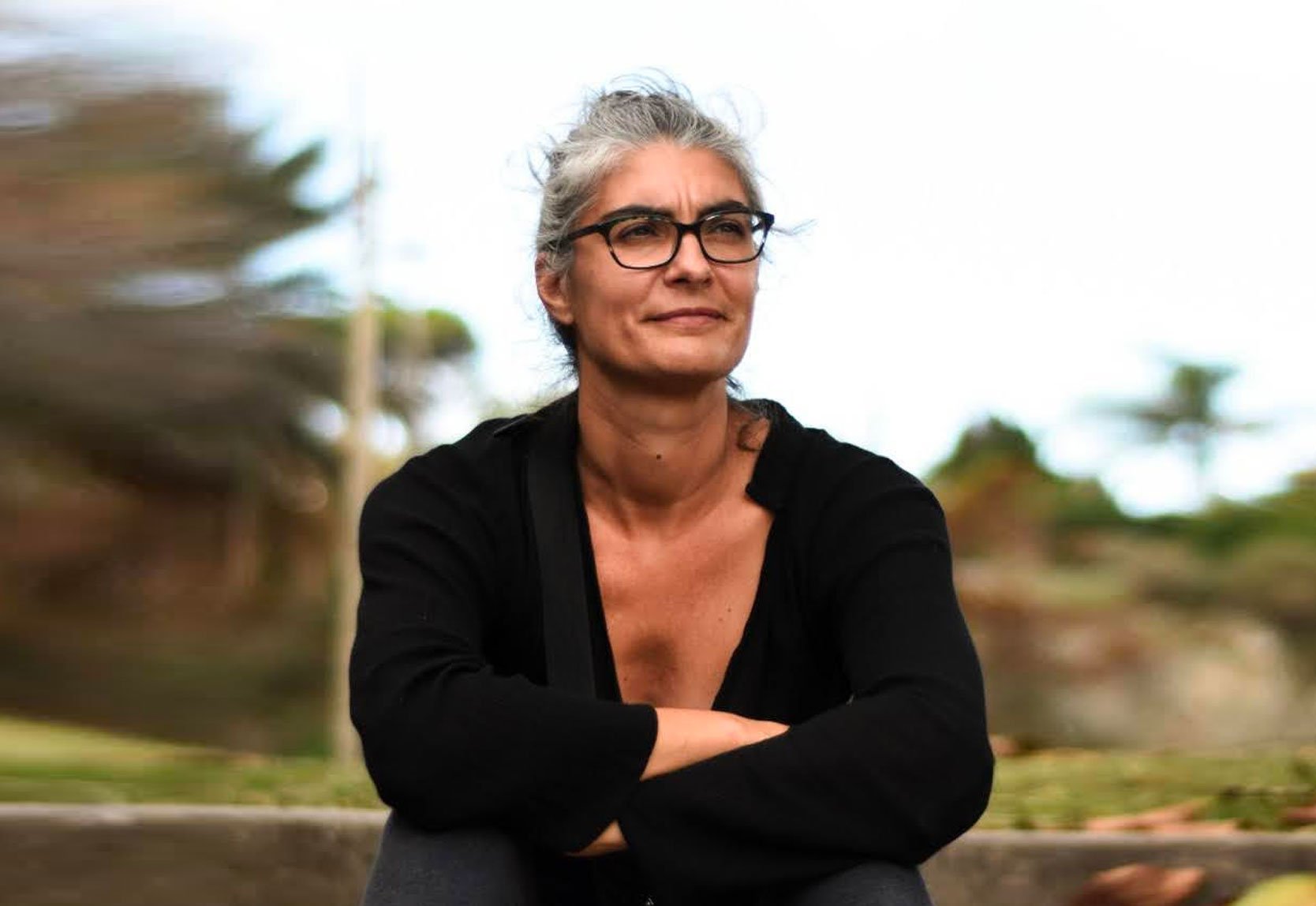Femicide on the front page
Portrait of activist and researcher Helena Suárez Val; Credit: Soledad MoragaMeet the global network of activists and citizen journalists determined to document violence.
Mariane Pearl On a sunny, crisp, fall weekend, Dawn Wilcox sits in front of a computer in her suburban Dallas home with her cat perched on her lap, building her database. She scours news reports and police records for details about Ashli Ehrhardt Wonder, a 29-year-old woman allegedly killed by her estranged husband in Kansas City, Missouri, on September 22, 2023. The details are horrific, down to the fact that the assailant wrote his last name in blood on Wonder's leg.
Wilcox, 59, marks Wonder as the 729th known femicide in the United States this year. A couple rows below, #731 is 26-year-old tech founder Pava LaPere, a beloved Baltimore CEO who was named in Forbes’ 30 Under 30 list earlier this year. A man followed her home and strangled her in late September. And LePere and Wonder were far from alone; femicide—the killing of women and girls because of their gender— increased by 24% in the U.S. between 2014 and 2020, according to a 2022 report by the Violence Policy Center.
In the United States, often “people think femicide only occurs in Afghanistan and other so-called ‘developing’ countries, but this is happening right here on an unimaginable level,” Wilcox says. “Each death isn’t a cold number or a statistic, but a human being…a woman with hopes and dreams.”
A few hundred miles away, north of Little Rock, Arkansas, 52-year-old Rosalind Page is adding an entry to her own grim database. On October 3, Sian Cartagena, an 18-year-old woman whose mother described her as a “victim to a domestic abusive relationship” died two days after being shot in Allentown, Pennsylvania.
“At least five Black women and girls are killed each day in the U.S.,” says Page, noting that Black women are disproportionately impacted by intimate partner violence and femicide. “This is an epidemic and it’s only getting worse.”
Wilcox and Page aren’t professional journalists. They’re both full-time nurses who, driven by passion and frustration, have become investigative reporters in their spare time. Wilcox, a domestic violence survivor, has spent the last seven years building Women Count USA: Femicide Accountability Project, a database that has recorded 12,500 women murdered since 1950. Page, who has spent the last three decades working at a hospital, launched her database, The Black Femicide Prevention Coalition, after she noticed a pattern: More than half of the Black women she treated were victims of male-perpetrated violence.
Wilcox and Page are part of an unlinked but growing global army of activists and journalists, from Uruguay to Algeria, who are taking it upon themselves to track femicide, one of the most extreme forms of gender-based violence. Exasperated by what they see as government inaction and inadequate media coverage, they are committed to honoring victims, pushing the news industry to do better, and providing the kind of vital data that can actually catalyze change.
“We’re doing this work hoping that it becomes obsolete,” said Helena Suárez Val, who in 2014 started Feminicidio Uruguay, a public database tracking femicide in her country, where gender-based violence is the second most reported crime behind theft. Suárez Val has since collaborated with similar women-led data efforts throughout South America through a collective she co-founded called Data Against Femicide. As she describes it: “Our data is our activism…one of the tools that will hopefully bring down the misogynist master’s house.”
Screenshot of Helena Suárez Val’s database, Feminicidio Uruguay“IT’S STILL CONSIDERED A WOMEN’S ISSUE”
Page, Wilcox, and Suárez Val all say they do this work because the rest of the media isn’t—and that, itself, is rooted in sexism. “Femicide is underreported because it’s still considered a women’s issue,” said Elisa Lees Muñoz, executive director of the International Women’s Media Foundation (IWMF). “In general, and especially when it comes to violence, our work over the years has found that women’s voices and stories are drowned out in the news.”
Even when femicide does get covered, there’s often context missing: A 2022 UN report found that femicides are still largely described in the press as independent incidents—obscuring how systemic and persistent gender inequities contribute to them.
The report also highlights research from Turkey showing that headlines in that country’s media frequently emphasize the victims’ alleged failure to fulfill socially normative gender roles (e.g. “Shot His Wife Who Did Not Come to Bed”). In Egypt, too, “the media is doing sensationalized coverage that doesn’t call for reforms,” says Nada Nashaa, a prominent anti-violence advocate there. And research from South Africa shows that coverage of femicide often tries to mobilize understanding or empathy towards perpetrators by using language that attributes their actions to the influence of alcohol, drugs, passion, stress, or anger, all of which are framed as beyond their control.
“It’s like you have to die to get attention,” says Mariam Mangera, the national coordinator of the National Shelter Movement of South Africa and a leader in the country’s viral #TotalShutdown movement. “And even then, it might not make the news.”
In Algeria, the database Feminicides Algérie is run by two young volunteers, Wiame Awras and Narimene Mouaci, who say they contact a victim’s loved ones and interview at least five people to better analyze each femicide before making it public. “In our society, femicides are triggered by an obsession to control the body and minds of women through a system based on alleged virility and honor,” they write on their website. “The idea is that if you do what is expected of you, you will be protected. It’s a vicious thought system that makes the women guilty of the violence against her.”
CHANGING CULTURE, STORY BY STORY
Despite—and because of—the media’s silence, a wave of feminist movements across the globe has helped fuel the demand for better, fuller coverage of gender-based crimes. In Argentina, the Ni Una Menos movement emerged in response to the murder of 16-year-old Lucía Pérez in 2016. Through protests and social media campaigns, it forced both the media and the government to reevaluate their handling of femicide cases, and led to significant changes in how femicides are reported. The country now boasts the highest number of ‘editoras de género’ (gender editors) in South America.
These activists persist in the face of new backlash, too. In 2022, Turkish lawmakers put the prominent Turkish anti-femicide campaign “We Will Stop Femicide Now” on trial, accusing the feminist group behind it of “immorality” and going against “Turkish family values.” Several hundred women protested outside Istanbul's main court, and last month, a Turkish court overruled the prosecution. That move gave hope to Turkish journalist Ceyda Ulukaya, who created Femicide Map in 2015 to map the crimes. “The bar is low…[but] the feminist movement over the years has been successful in influencing the media to cover violence against women, including femicide, without judgment and blame on the victims,” she says, noting that a recent survey shows a rise in public awareness of femicide.
Journalist Ceyda Ulukaya talking about her Femicide Map on CNN Türk, November 25, 2021In Mexico, where increased militarization and the “war on drugs” has contributed to rising femicides, journalists like Lydia Cacho continue reporting on the subject despite the sheer danger of exposing systemic ills. Cacho, who was kidnapped and tortured by police in 2005 and was forced to flee the country in 2019, does see progress. “Despite impunity, what we have now is an unprecedented number of women and girls openly confronting their aggressor and bringing their cases to court,” she said, crediting in-depth journalism on the issue. “They are fully aware of their rights and have a clear sense of how sisterhood and networking can protect them.”
Similarly, Suárez Val praises the feminist movement in Uruguay with igniting change. In 2017, the government in Uruguay finally passed a law against gender-based violence. While Suárez Val says it’s been slowly implemented, “it’s still a sign that the government is at least hearing the feminist movement.”
WHO GETS THE MEDIA’S ATTENTION?
Across the world, reporters and activists all lament one obstacle in the fight to get femicide on the front pages: Some lives are valued more than others.
When femicides are covered by mainstream Western media, notes Wilcox, middle- and upper-class cisgender white women and girls get most of the media’s ink. The late PBS news anchor Gwen Ifill, a Black woman, coined the term “Missing White Woman Syndrome” to describe the disproportionate coverage given to them—especially glaring today, given that the homicide rate for Black women and girls in the United States is rising at double the rate of white women. Page says she often hears about femicides before the media or law enforcement do because trust in these institutions among Black communities is broken. “Black women face a double whammy in this country,” she says. “We are dealing with racism and the patriarchy.”
Across the world, especially in the U.S. and Canada, Indigenous two-spirit people and women have faced similar issues of underrepresentation. Indigenous communities, especially women and girls, experience disproportionately high rates of domestic and sexual violence, with some counties reporting rates more than 10 times the national average. But the media coverage is just catching up.
“There are 22 federally recognized tribes in Arizona. Criminal justice in Indigenous communities is a topic that deserves its own beat,” said Chelsea Curtis, an IWMF grantee and Diné (Navajo) reporter. “We are working with such little information.” In the next year, she intends to solve that with a database and mapping of those crimes. “By centering the injustice of missing and murdered Indigenous women and girls,” she says, “hopefully more families can walk away with answers or assistance finding their loved ones.”
“NOT A PANDEMIC… MISOGYNY IS OUR CULTURE”
Women take part in a demonstration to mark the International Women’s Day in Buenos Aires, on March 8, 2022. Through protests and social media campaigns, Argentinian women have forced both the media and the government to reevaluate their handling of femicide cases. (Photo by JUAN MABROMATA/AFP via Getty Images)So how should the media address these crimes? With dedication, context—and without cliche. Suárez Val from Uruguay believe the Western media’s recent proclivity to use the words epidemic or pandemic to describe the surge and prevalence of femicide conceals the root of the issue. “This can’t be treated with a vaccine. Misogyny is our culture. It’s the air we breathe,” the data activist said. “We need to change hearts and minds…and the media is a big part of that.”
Back in her Dallas home, Wilcox is still sifting through the wrenching details of Ashli Ehrhardt Wonder’s murder. Wonder and her two daughters were set to move out of the home they shared with her estranged husband just two days before he murdered her. At the time of publication, Wilcox has added 96 names to her database below Wonder’s.
Among them is Denise Snead Doram, a 63-year-old Black woman with a gentle smile. She was shot in the face by her stepson in Philadelphia and described by her neighbors as a loveable woman and enthusiastic churchgoer. There are a few lines about her in the media but Denise, as beloved a human being as she may have been, will likely never be found on the front pages. For the general public, she remains #740.




